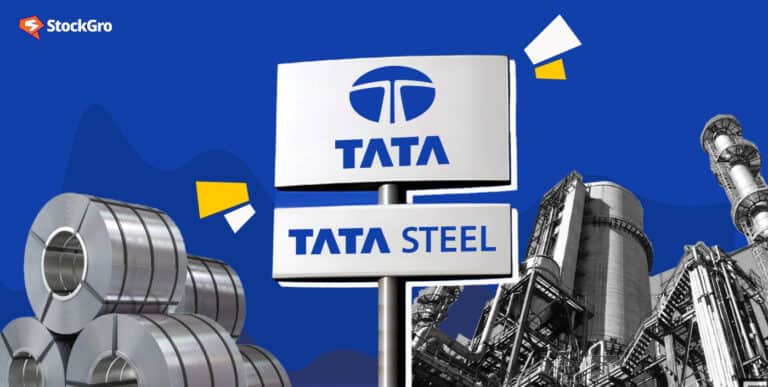
Remember in school, you were taught the notorious chapter ‘profit and loss’? Boy, was maths class a nightmare! But you can be “nostalgic” about Grade 5 mathematics some other time. For there was a key trading lesson taught in that chapter – if the selling price is greater than the cost price, you make a profit. This is essentially what “buying the dip, selling the rip” entails.
What do you mean by buying the dip, selling the rip?
Although used in a single statement, ‘buying the dip’ and ‘selling the rip’ are two distinct phrases. Both are used to describe a common stock market strategy. But should you call it a strategy? Or merely what you’re supposed to do when you trade?
To answer this question, let’s crack the meaning of each phrase.
What does ‘buying the dip’ mean?
Buying the dip essentially means purchasing equity or any tradable security when their prices have gone down. This price action may typically result from negative news, market volatility or any external factor.
When the price of a security falls, traders view it as a buying opportunity. Why? Because you get to purchase the asset at a discounted price. And then, when the price recovers or goes up, a trader can sell the asset to make a profit. This recovery may happen due to some positive news, reassurance from stakeholders, etc.
What does ‘Selling the rip’ mean?
On the flip side, selling the rip involves selling your shares of a stock or security after its price unceremoniously increases, owing to some positive outcome e.g. promising Q4 results. Here, rip means rise in share prices. This, again, is a market fluctuation that traders view as a “selling opportunity”.
Being a market fluctuation, the stock might be overvalued, and the share price may fall soon after, owing to a market correction. Whatever the case, traders hope to sell their shares at a high price to earn a profit before the price falls back down.
Read Now: The ultimate guide to IT return filing on your own 2023
Similarities between buying the dip & selling the rip strategies
Now, try looking closely at both strategies. Both are centred around sudden market fluctuations which are short-lived and primarily owing to current affairs, irrespective of positive or negative.
Needless to say, both strategies require careful analysis and a good understanding of market trends. Why? So that you can predict how the market would react to a particular news. For instance, poor or average quarterly results.
In a nutshell, however, ‘buying the dip, selling the rip’ is a fancy rhyme for a common trading behaviour – buy at a low price and sell at a high price. Exactly what you learned in school in profit and loss.
An example – buying the dip!
If you are a seasoned trader, you probably must have bought a lot of dips. But for the newbie traders looking to earn some greens, here’s a recent example of buying the dip a.k.a. downfall of IT stocks.
The incident took place on April 17, 2023. Sensex, the index of the Bombay Stock Exchange (BSE) was on a 9-day winning streak, rallying over 2,800 points. However, on April 17, IT stocks took a massive hit, dragging the exchange down by 12 percent.
So, what exactly happened? This massive dip was attributed to the poor performance of two IT giants during Q4 – Tata Consultancy Services (TCS) and Infosys.
While both reaped profits, their performance was below economists’ predictions. And surprising as it may be, this slightly below-par performance is enough to make traders lose faith.
Of course, inflation, the Russia-Ukraine conflict and recession fears did impact the market. In fact, in the past year, Infosys shares fell by a whopping 20 percent. But its poor quarterly performance became the latest reason for shares falling in the red.
As traders anticipated a further dip, TCS and Infosys shares faced a massive sell-off. But there’s a silver lining after all. While a sell-off was underway, traders took this dip as an opportunity to buy tech stocks. So that later, when Nifty IT recovers, they can earn a sizable profit!
Let’s look at the status quo of Nifty IT. Only yesterday, May 02, 2023, the market emerged bullish as NSE Nifty 50 gained 82.65 points while BSE Sensex rose 242.27 points. Nifty IT was one of the top gainers after rising 1.14 percent.
Those who sold their tech stocks yesterday may have incurred profit, perfectly portraying “buy the dip” strategy. Irrespective of the profit being a mere Rs. 100 or a large sum of Rs. 10,000.
You may also like: How to Invest in US Stocks from India?
An example – Selling the rip!
If IT stocks faced a sticky end last month, Auto stocks performed well, with traders gaining huge profits after promising FY2022-23 Q4 results.
Thus, let’s take the case of Tata Motors to understand how ‘selling the rip’ works.
On April 10, 2023, share price of Tata Motors, the leading automobile subsidiary of Tata Group, surged 8 percent in intraday. Incidentally, this marked their highest one-day surge since May 13, 2022.
The question is – what drove this surge? Promising quarterly results for the quarter ending in March 2023. Moreover, Tata Motors surpassed Hyundai India to become the second-largest automobile manufacturer in India.
Clearly, this surge was not a mere market fluctuation and came about due to compelling reasons. And those who had bought Tata Motors shares early on gained huge profits from this intraday surge. How? By selling the rip!
Irrespective of what the reasons are, this surge was short-lived. And hence, traders took this opportunity to sell their shares rather than wait for the price to increase.
What does this tell you? That both ‘buying the dip’ and ‘selling the rip’ are strategies based on short-lived market fluctuations.
It then becomes important to ask – why are these movements short-lived? Simply because the stock market is impacted by a combination of different macroeconomic and microeconomic factors.
Thus, if Tata Motors’ shares surge today due to strong Q4 results, they may fall tomorrow, owing to US Fed’s monetary policy. Or if India reports higher inflation. Factors impacting each trading session keep changing.
And so, the lesson to be learnt – as traders, you need to learn how these factors would “cumulatively” impact a stock’s performance. What factor may impact the stock today? Will it have a long-term or short-term impact?
Trading, thus, becomes a game of asking the right questions. After all, curiosity does not always kill the cat!
Also Read: Lights, camera, invest: Pop culture’s impact on investment trends

